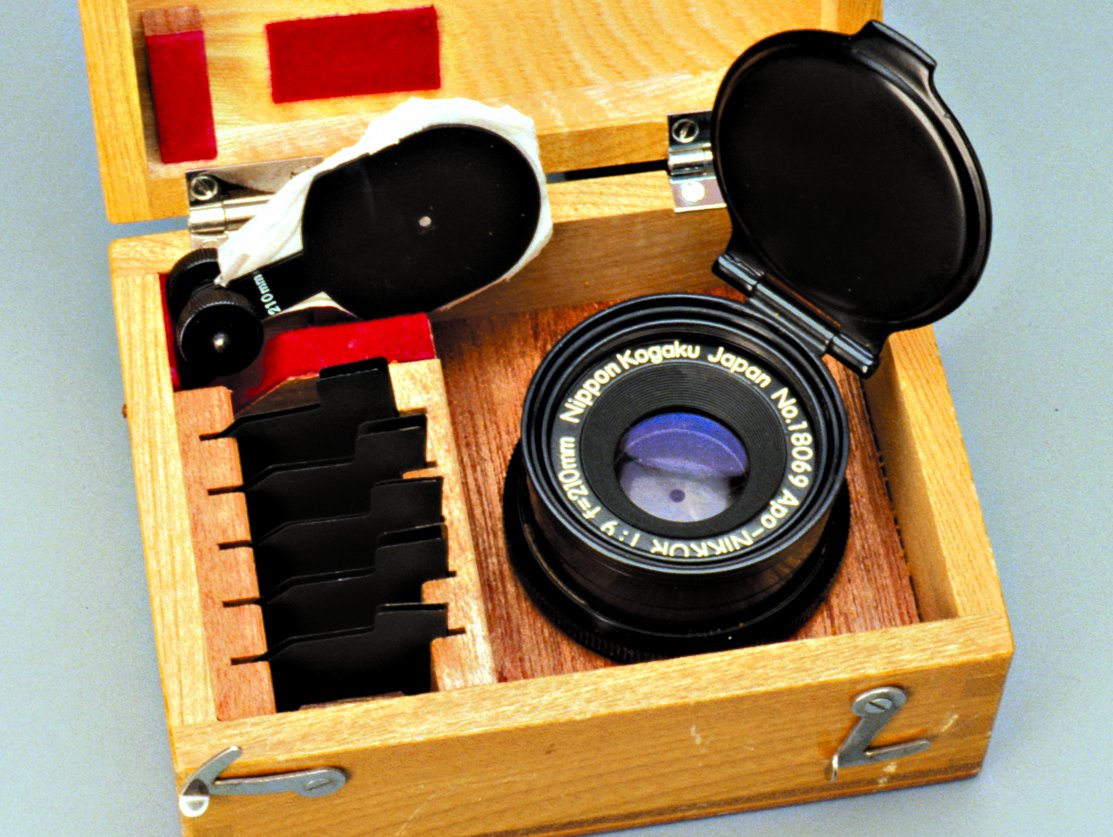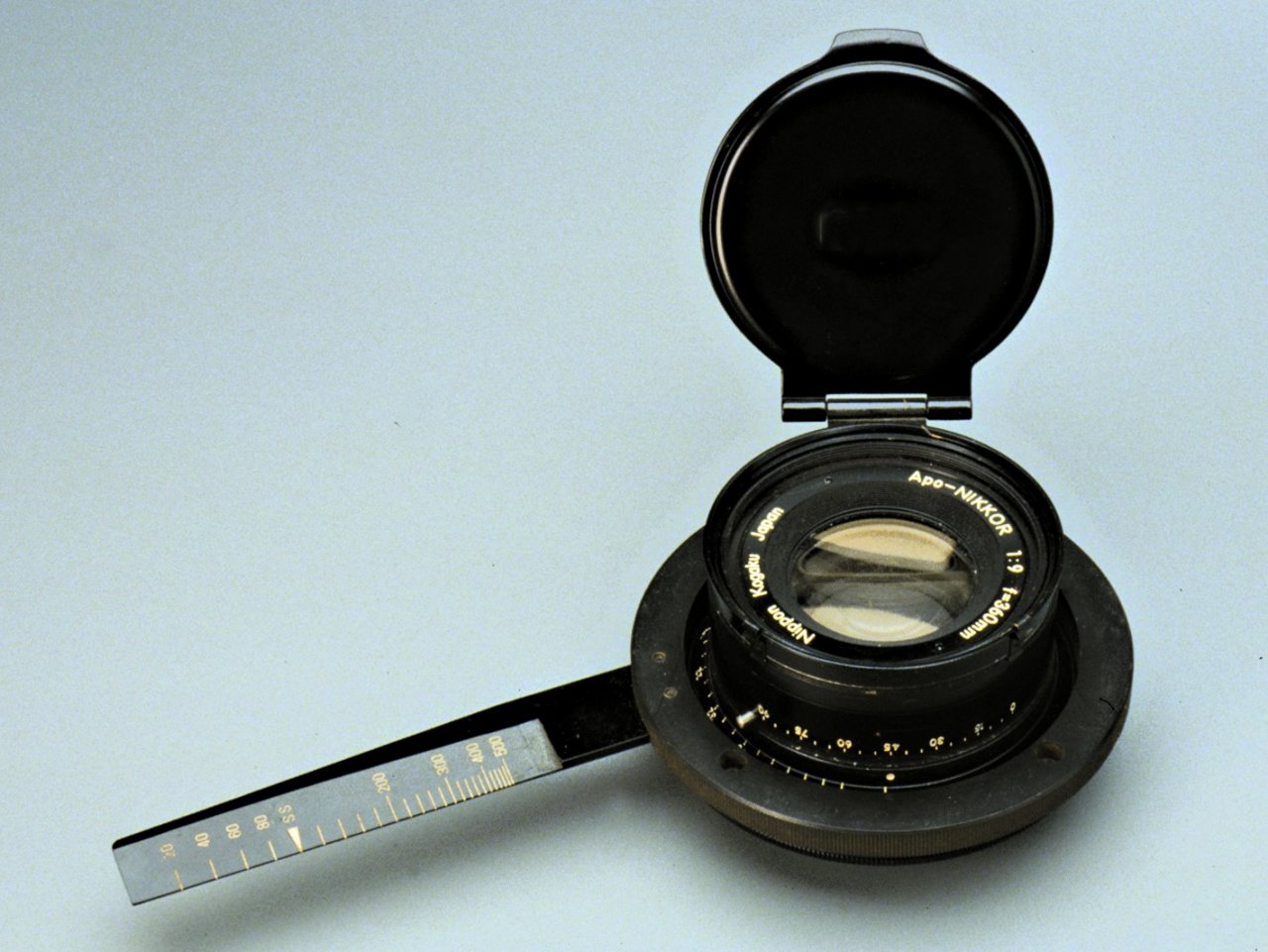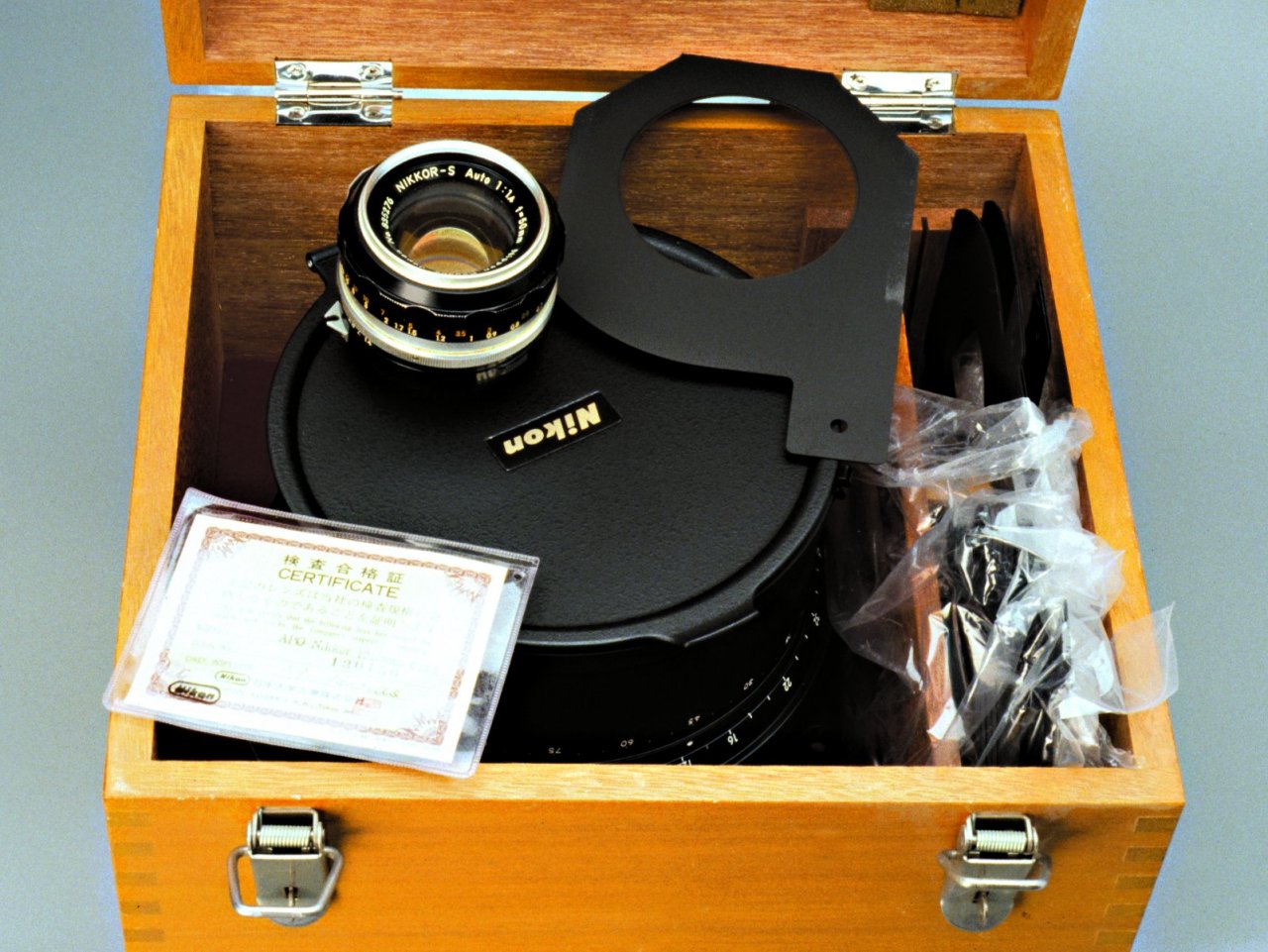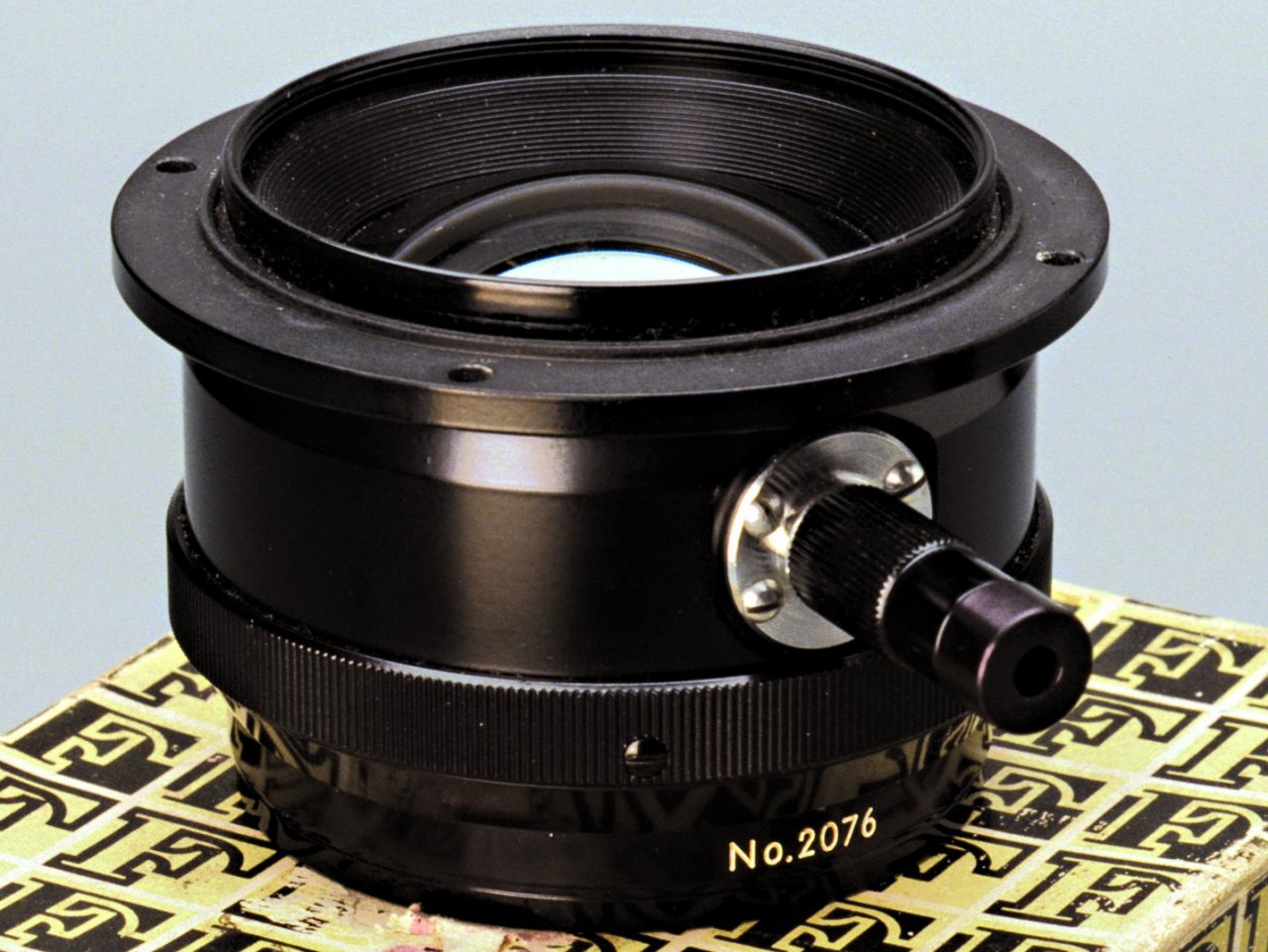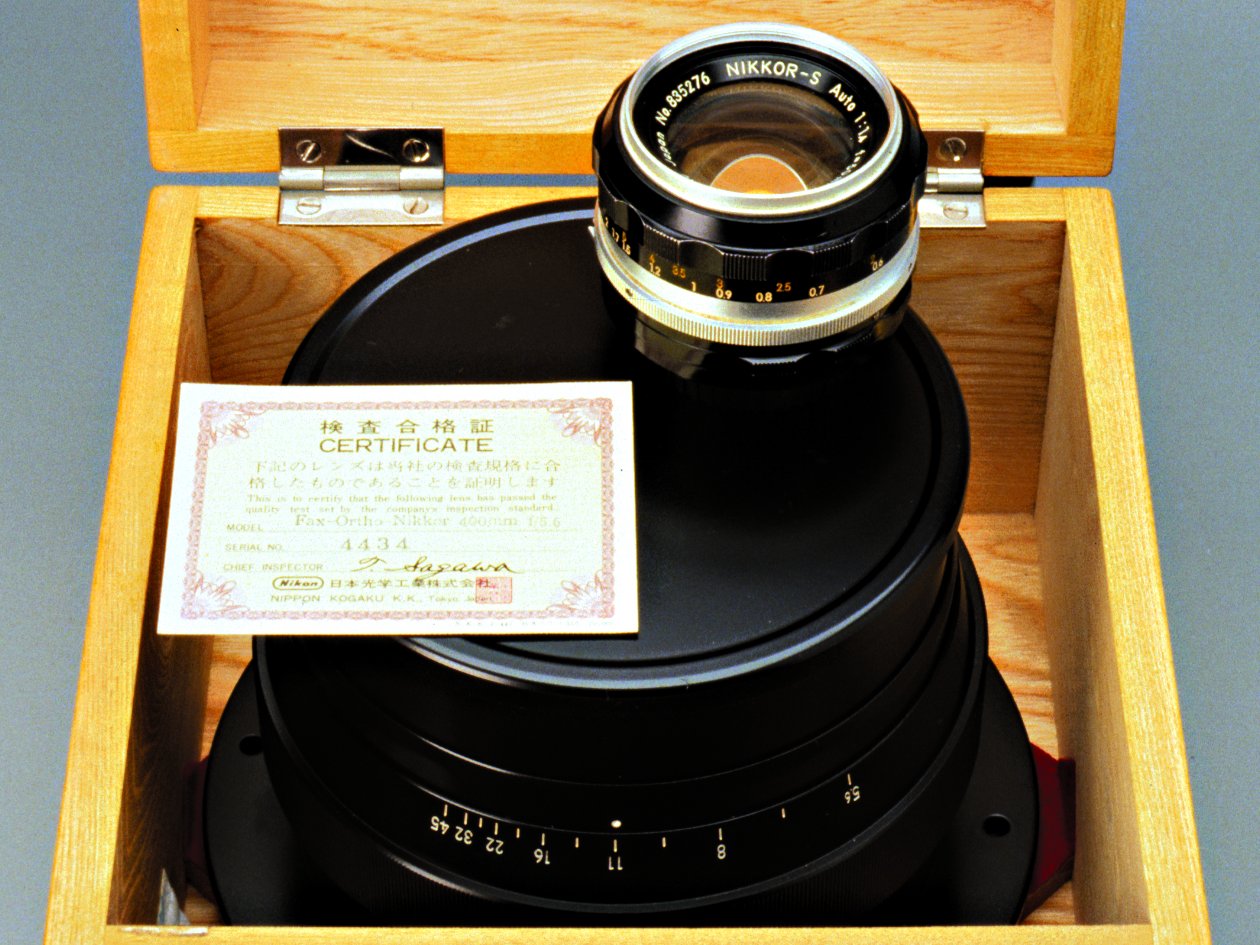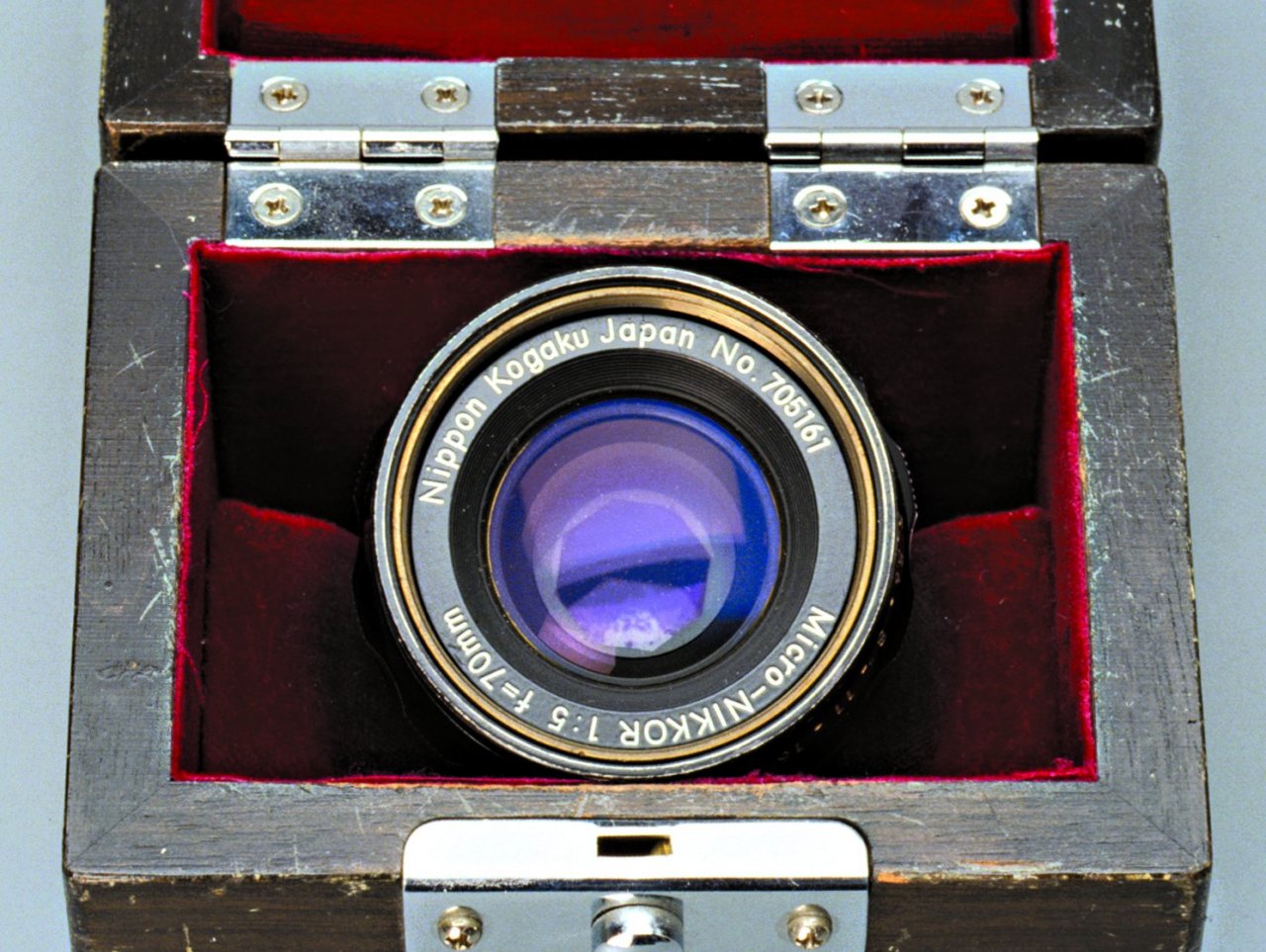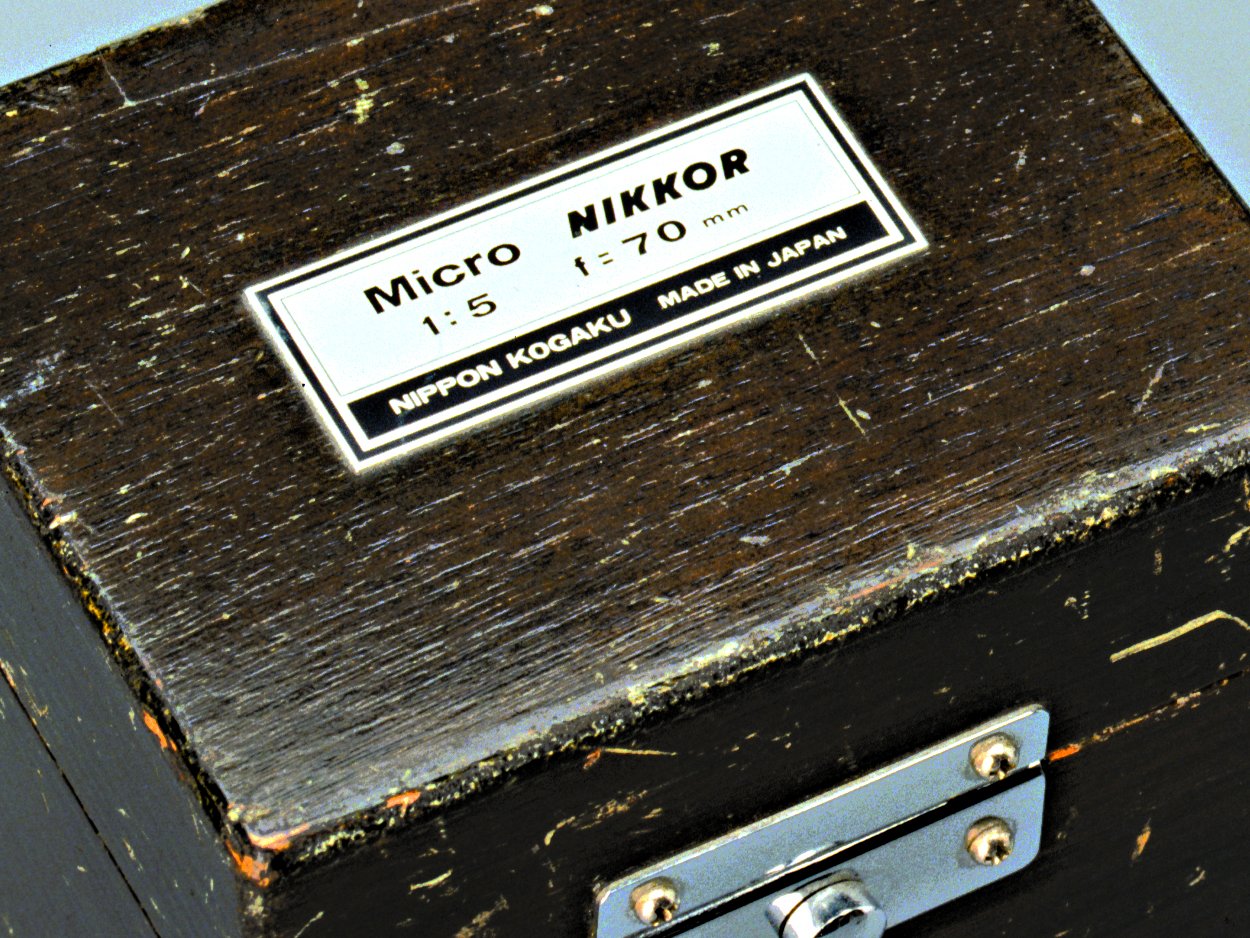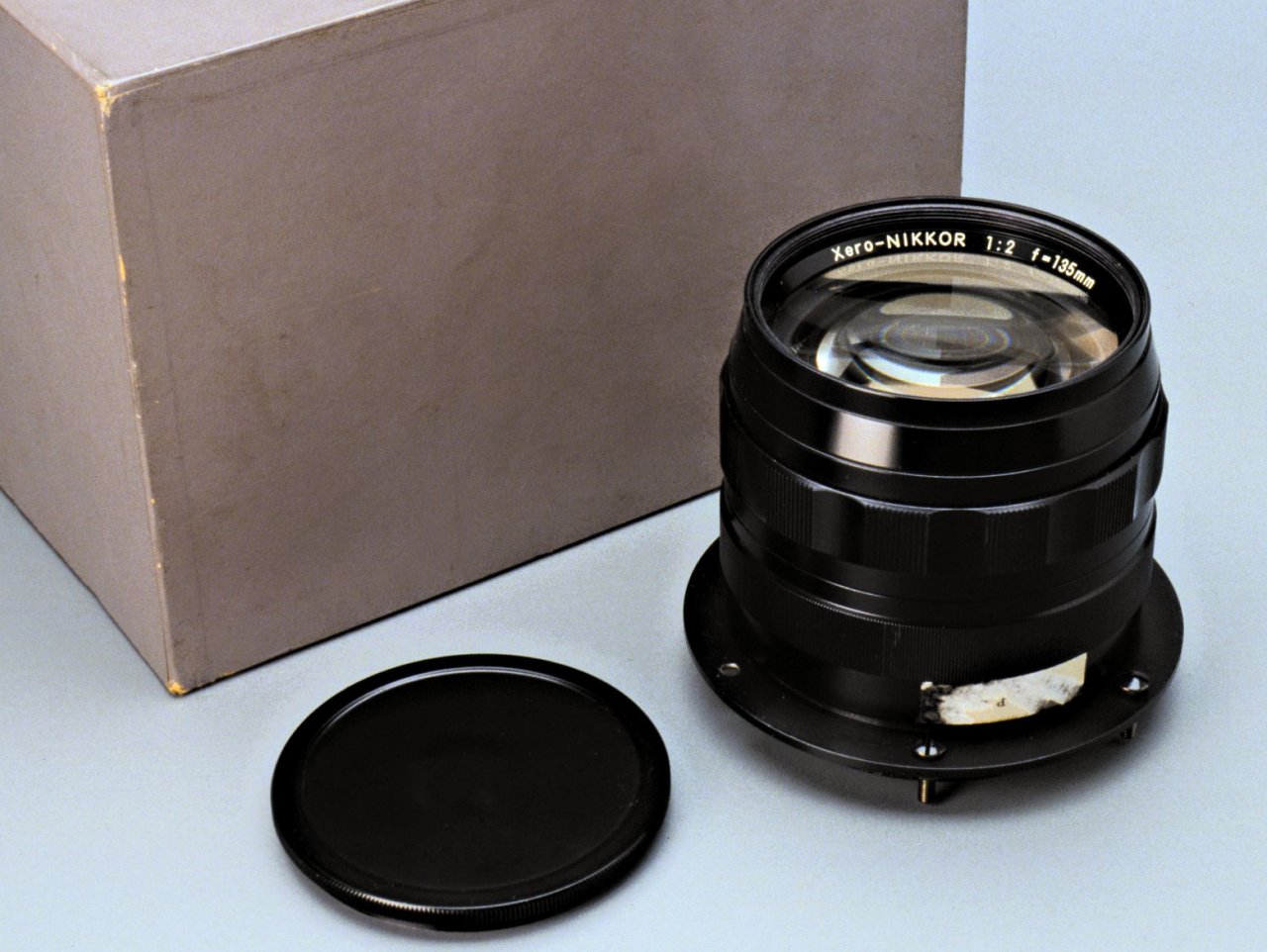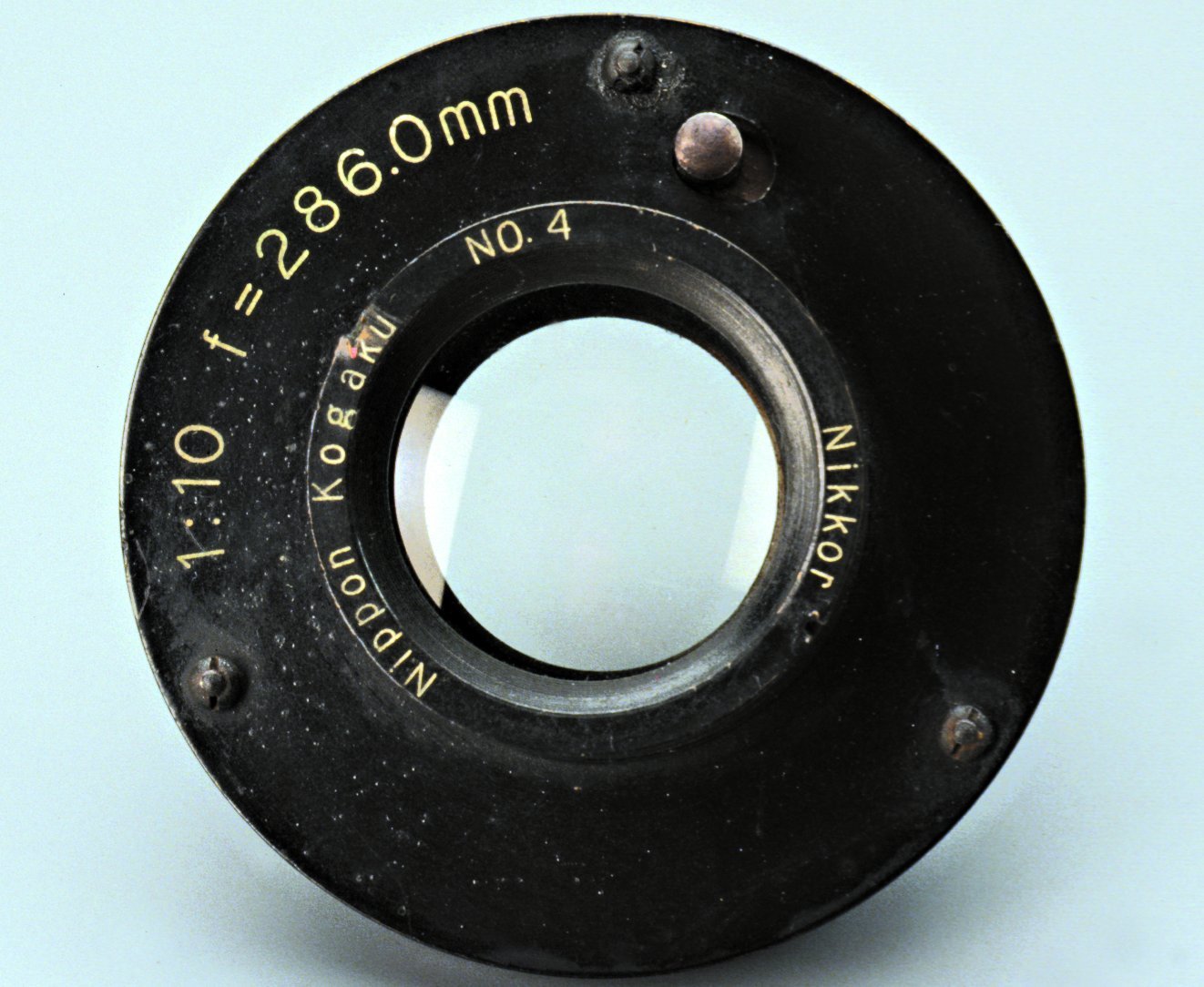
1:10 f=286.0 mm Nippon Kogaku No. 4 Nikkor
Anonymous Nikon Collector These pictures and the description were made by Uli Koch. The collector of this items wants to be anonymous. Uli Koch thanks the Nikon collector for showing these items to the public. Nikkor 286mm F10 A lens for an unknown purpose. The lens has a shutter "NO. 4". The lens engraving is unusual as it says: "Nippon Kogaku" and "Nikkor", both with initial capital letters. Usually the word "NIKKOR" was written in capital letters and after the brand name always "JAPAN" was added. On this lens "JAPAN" is missing. The focal length is in "mm" as Nippon Kogaku engraved their (photographic) lenses from 1964 onwards. The lens looks like it was made in the 1940, but why did they engraved the focal length in "mm"? Usually Nippon Kogaku engraved the purpose of the lens as "AERO" or "Apo", but not on this lens. This huge lens is a mystery. Apo-NIKKOR 150mm F9 This Apo-NIKKOR is of the asymmetrical type with "Nippon Kogaku Japan" engraving and the focal length in "mm" with the serial number engraved on the front. It came in the wooden case with the waterhouse plates and the base plates.
Apo-NIKKOR 210mm F9 This Apo-NIKKOR is of the asymmetrical type with "Nippon Kogaku Japan" engraving and the focal length in "mm" with the serial number engraved on the front. It came in the wooden case with the waterhouse plates and the base plates.
Apo-NIKKOR 360mm F9 This Apo-NIKKOR is of the symmetrical type with "Nippon Kogaku Japan" engraving and the focal length in "mm". The serial number is engraved on the side of the lens.
Apo-NIKKOR 480mm F9 This Apo-NIKKOR is of the symmetrical type with "Nippon Kogaku Japan" engraving and the focal length in "mm". The serial number is engraved on the side of the lens.
Apo-NIKKOR 1210mm F12.5 This Apo-NIKKOR is of the symmetrical type with "Nikon" engraving and the focal length in "mm". The serial number is engraved on the side of the lens. This huge and heavy lens came in the wooden case with the waterhouse plates, the base plates and the control certificate. The Nikkor 50mm F1.4 lens was used for comparison.
COM-NIKKOR 37mm F1.4 Computer Output Microfilm (COM) photography is defined by certain distinct conditions, such as the color, intensity, and contrast of the traced images. These constitute the distinct performance limits of COM-Nikkor lenses. The range of aberration correction is from 400 nm to 650 nm. The contrast between the traces and the screen background is maximized. High resolution is attained by using a large, high-speed aperture, which also takes care of adequate exposure of the fairly high framing speed of moving traces on the CRT. The COM-Nikkor 37mm F1.4 covers a field diameter of 15mm with standard magnification of 1/8X.
Fax-NIKKOR 160mm F5.6 This is Fax-NIKKOR with "Nikon" engraving and the focal length in "mm". The Fax-NIKKOR lenses were used for taking pictures with silver chloride film, electro-photographic film and other emulsions used for copying of more sensitive to near ultra-violet ray than to visible ray materials. Those lenses were made from special glasses absorbing very little ultra-violet ray. The (wide-angle) Fax-NIKKOR lenses have been designed and produced as lenses for copying machines and compact photo-engraving cameras. This lens has a mechanical shutter (only "B"). The serial number is engraved on the side of the lens.
Fax-Ortho-NIKKOR 400mm F5.6 This Fax-Ortho-NIKKOR has "Nippon Kogaku Japan" engraving and the focal length in "mm". The serial number is engraved on the front. This huge and heavy lens came in the wooden case with the control certificate. Those Fax-Ortho-NIKKOR lenses were designed for high fidelity reproduction of drawings requiring large magnification (covering area several square meters). Therefore, they were mainly used in making-off of steel plates for shipbuilding. The Nikkor 50mm F1.4 lens was used for comparison.
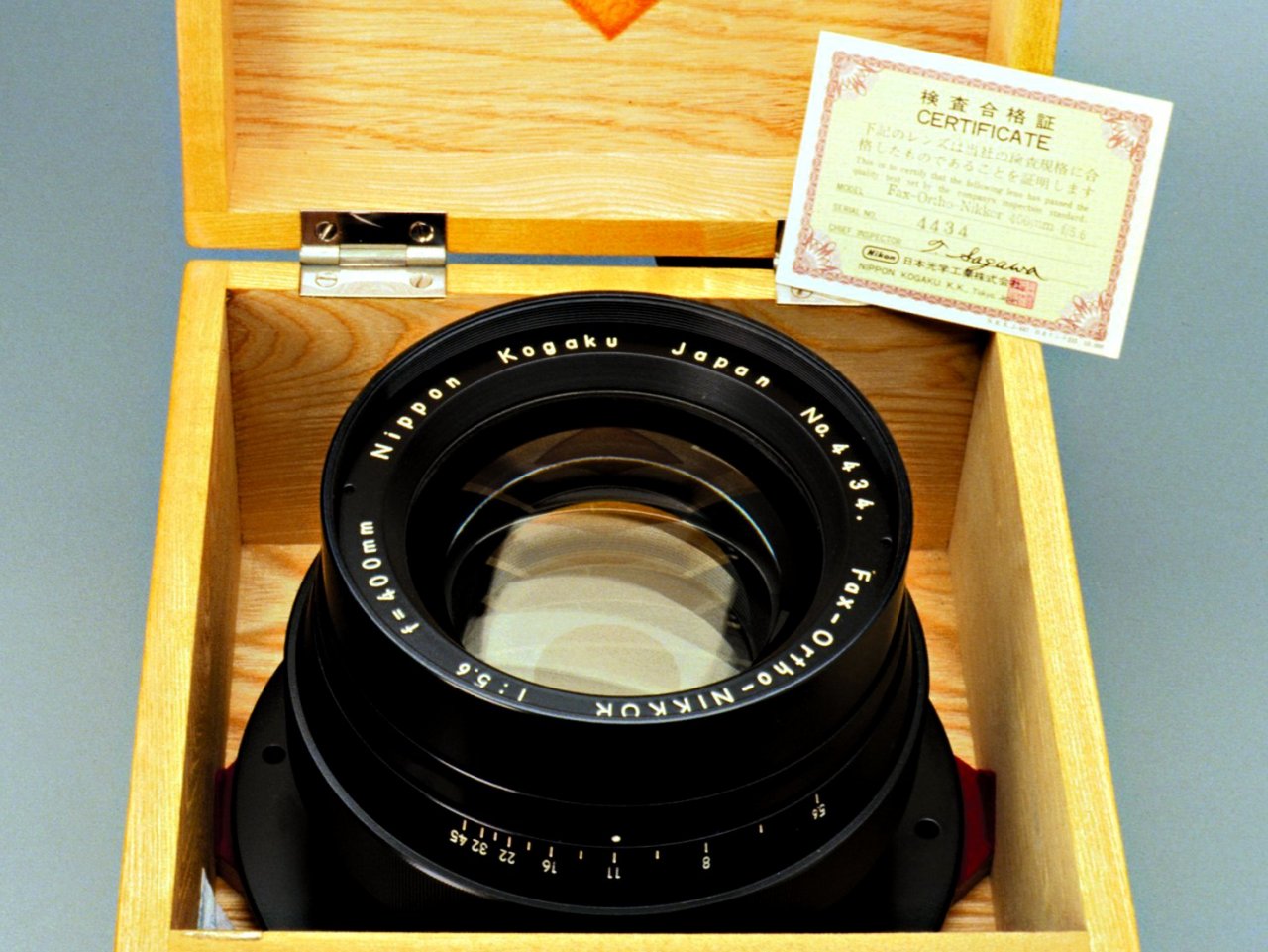
Beautiful Fax-Ortho-NIKKOR 400mm F5.6 and Sagawa Card
Micro-NIKKOR 70mm F5
This Micro-NIKKOR lens was the successor of the Micro-NIKKOR 7cm F5.
Repro-NIKKOR 85mm F1.0 A collectors delight: Two Repro-NIKKOR lenses and one of those came like new in the box and with the case. Those Repro-NIKKOR lenses were exclusively designed for life-size reproduction in 35mm format. It has a maximum aperture ration of f / 1 (effective aperture ratio: f / 2 at 1 : 1 reproduction) and is several times brighter than a Micro-NIKKOR lens and has a higher resolving power. However, due to the high-speed and correction of aberrations in the lens, magnification is limited within the practical range of 0.9 x - 1.1 x. The entrance and exit pupils are located far behind the lens, which makes the principal ray (rays passing through the center of each pupil) run almost parallel to the optical axis. This feature gives the Repro-NIKKOR lens a great advantage when used as a relay lens.
Construction: 12 elements in 8 groups

Repro-NIKKOR 85mm F1.0
Xero-NIKKOR 13.5cm F2 and New Xero-NIKKOR 135mm F2 The Xero-Nikkor is designed expressly for reproduction of CRT traces on the 127mm (5-inch) diameter screen of the Charactron Tube. It can also be used, of course, with an osilloscope or any other CRT. Its hight speed of f/2 affords adequate exposure of the high framing speeds of the relatively low-light level traces on the CRT. Standard magnification ratio is 2X at which corrections are optomal, but aberrations remain well corrected from 1.5X to 2.5X. Vignetting is insignificant in CRT reproduction applications. Resolution is comparable to or better than that of the CRT tubes encountered in practice. Color correction is 400 nm - 650 nm. The lens is thereaded at both ends for convenience in normal or reversed mounting. The Xero-Nikkor 13.5cm f / 2 has been improved at the beginning of 1970's. One lens element was added to improve the feature of the distortion. This lens is called "New Xero-NIKKOR 135mm F2" in Japan.
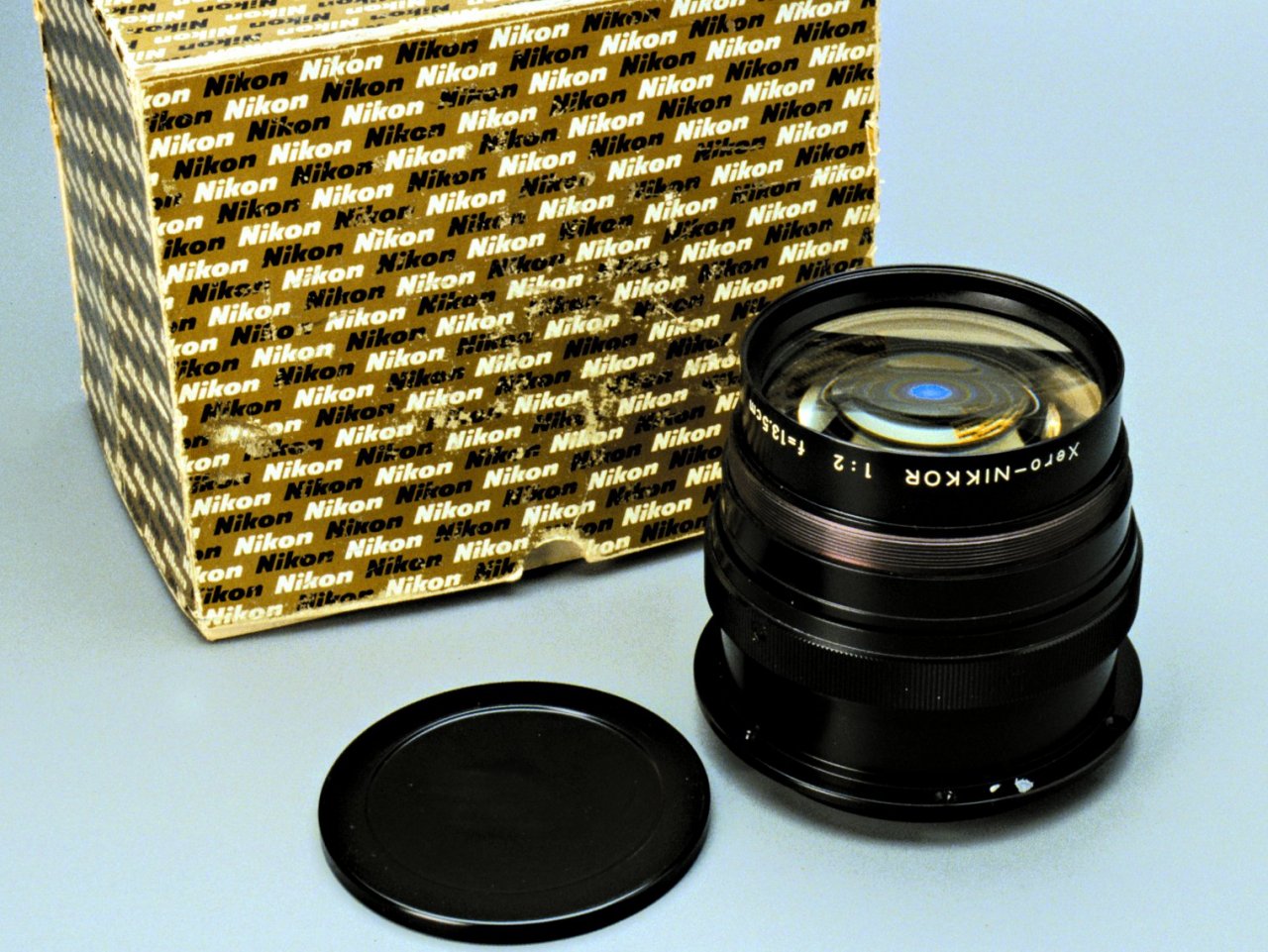
Xero-NIKKOR 13.5cm F2
Special Thanks to Mr. Uli Koch
------------------------- Next Page Articles → Return to Chapter 0 Top Page Shortcuts
Chapter 0
Top Page
Copyright Michio Akiyama, Tokyo Japan 2004, 2021
|

